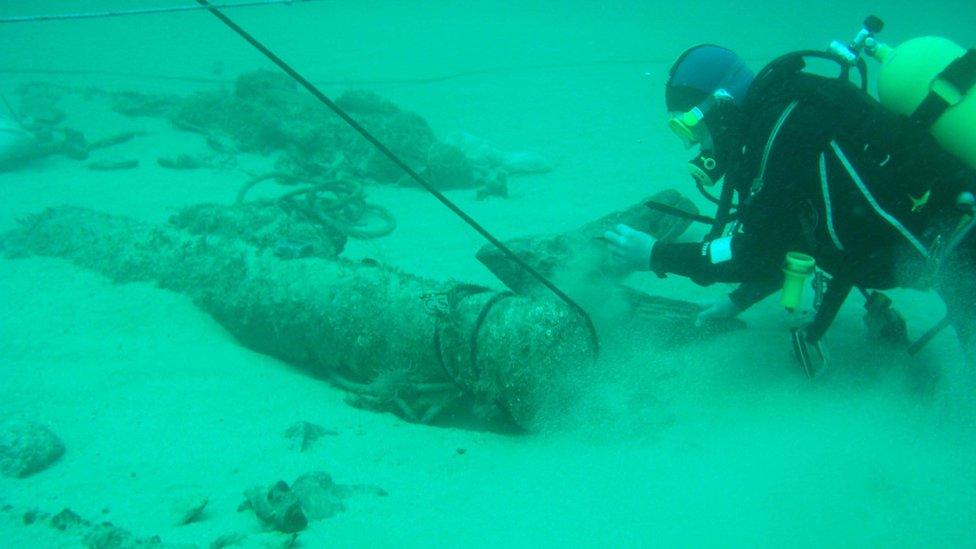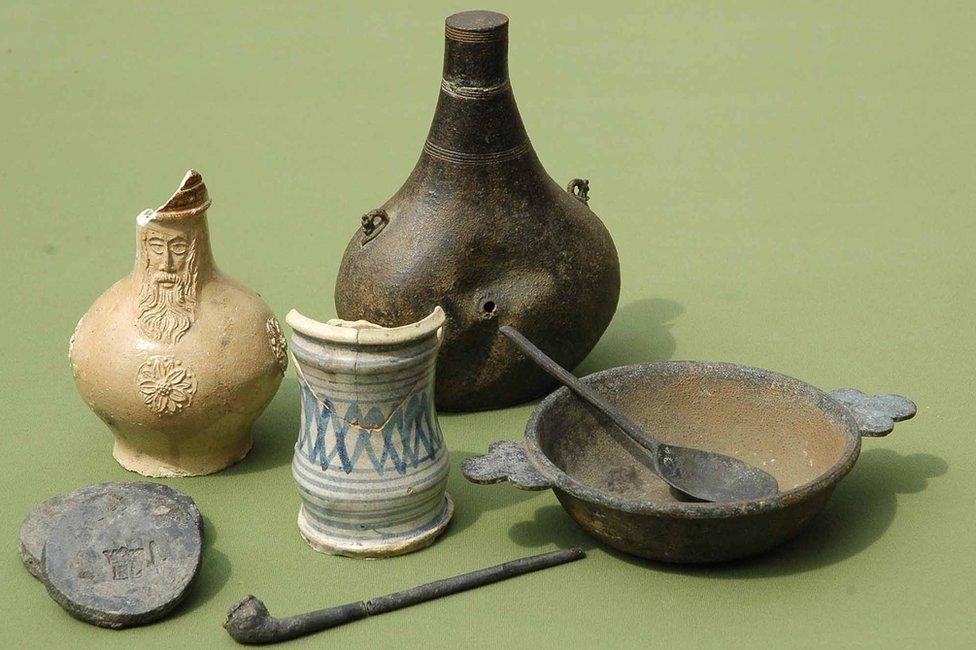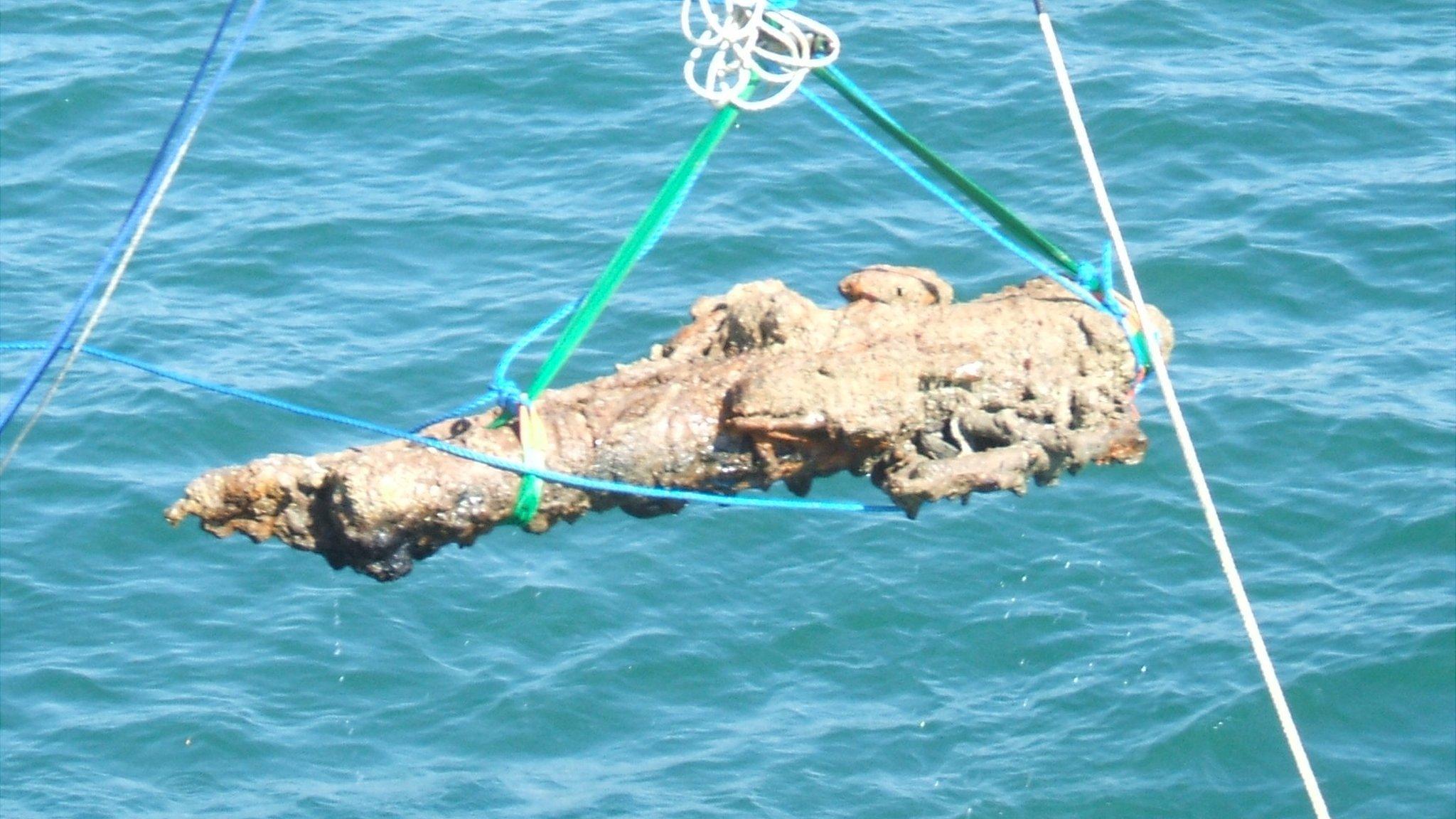Divers to explore Alderney's Elizabethan wreck
- Published

Three cannon have already been raised from the site, along with 1,000 artefacts
Divers are to return to the site of Alderney's Elizabethan wreck next month, with the hope of discovering further 16th Century artefacts.
The wreck, half a mile north of the island, is the only vessel from the Elizabethan period to have been excavated in British waters.
The Alderney Maritime Trust has commissioned a survey of the seabed and hopes to discover further timbers.
The unnamed ship sank in November 1592 and was last dived in July 2016.
The dive is part of efforts to better understand English naval power during the 16th Century, with the wreck considered second only in importance to the Mary Rose, Henry VIII's warship which sank in 1545.
Fred Shaw MBE discovered two cannon on the shipwreck

Alderney's Elizabethan wreck
First located by Alderney fisherman Bertie Cosheril in 1977, when his lobster pots dragged up what was later revealed to be an Elizabethan era musket
Cannon were discovered days later by Alderney divers Fred Shaw and Dave Rendell
At the time, the wreck was believed to be from the 19th Century
A dive in 1991 saw a number of objects brought up that suggested the ship had been wrecked much earlier
The wreck attracted worldwide interest in 1992 when the discovery was formally announced as a 16th Century vessel
The Alderney Maritime Trust, founded in 1993, concluded the unnamed ship was one mentioned in States Papers from 1592, described as "cast away about Alderney"
The vessel was carrying dispatches from England's treasurer Lord Burghley to Sir John Norreys, who was leading Queen Elizabeth I's forces in Brittany


Cannon from the Elizabethan wreck were covered in concretion when they were raised

A tobacco pipe, pewter bowl and spoon and pottery are among the items recovered
Prof Eric Grove, a naval historian, said the ship remained an "important example" of English naval power during a period of great expansion under Queen Elizabeth I.
The ship sank four years after English forces defeated the Spanish Armada and showed the military advancement made in a relatively short period, he said.
"It demonstrated what a ship of that time engaged in military activities might have been carrying in the late 16th Century."
- Published7 December 2013

- Published6 March 2013
